The level during construction is a tool that cannot be replaced. It is used in any construction and installation work. It doesn’t matter if you install doors, windows or lay brick and ceramic tiles. This is a device that allows you to make the walls vertical, and the floors and ceiling - horizontal. It is also used when installing all types of communications and household appliances.
Content
Varieties
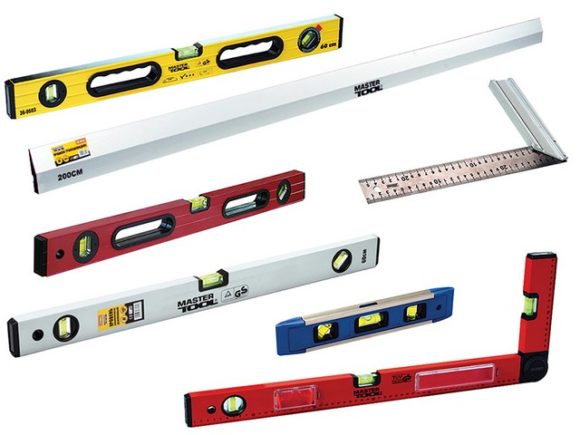
The selection of the construction level should be taken seriously. This will save not only money, but also improve the quality of work performed. Professional builders distinguish 5 main types of this building tool:
- Bubble.
- Electronic.
- Pipe.
- Hydraulic.
- Laser
Bubble
It is the most popular tool as it is easy to use and universal. They got their name because the main and sensitive element is the air bubble, which floats on the surface of the liquid inside the ampoule.
At building levels of the bubble type, there is an error of 0.6 / 1 mm per meter.
All levels of domestic production meet GOST 94 16 - 83. The basic conditions for the technique of their production are spelled out in it.
In their design, all models of this type have:
- hollow body;
- stiffening rib;
- ampoule with air;
- protective glass;
- scale in millimeters.
To reduce the weight of the device, the main metal of production is aluminum. Different lengths - from 25 centimeters to 3 meters or more.
There are also special tools of this kind that are used in the installation of metal structures. They will necessarily include magnets. They attach the entire device to the surface of the metal structure.
It is best for masons to use in their work a level whose body is reinforced and cast.
Electronic
Devices of this kind belong to tools for professionals. It in its design necessarily includes:
- goniometer;
- several ampoules with air;
- digital display;
- hollow body;
- protective glass;
- scale with values indicated in millimeters.
Feature is a digital display. It shows the deviation data. This value is calculated in degrees. You can also record measured slopes. If the slope is from 0 to 90 degrees, then it will notify with a signal.
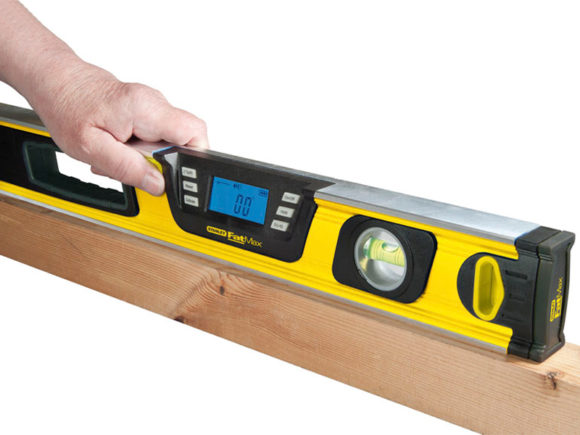
It is not difficult to check the accuracy of the building level of this type. To do this, you need:
- Lay it on a flat surface.
- Take readings.
- Flip 180 degrees.
- Remove new values.
If the difference in the readings diverge by more than 0.3 degrees, then the device must be calibrated.
Trumpet
This type of building level is used when laying water supply, sewage and gas pipelines. It allows pipes to be installed horizontally or vertically when arranging communications. It is also convenient in working with various beams, a rounded profile. The main feature of the pipe profile is its shape in the form of a Latin letter - “V”, as well as magnets, which make it easy to set the level on metal surfaces.
This kind of level has the same construction as the bubble level. Deviation shows an air bubble in a glass ampoule.
Hydraulic
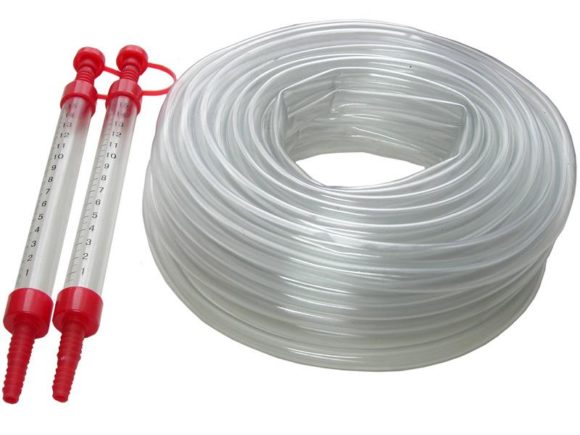
This device is used if you need to apply horizontal markings on construction sites that are located at a distance from each other. For example, it is used in the construction of foundations, the laying of brick walls and other construction elements that are located in the same planes.
Its design includes a pair of vessels that are connected to each other by a tube of transparent plastic or glass. Before you start working, you need to fill it with water for two-thirds of the volume of the flask. Water inside the unit must be free of air bubbles. If they are present, then you need to get rid of them. They affect the accuracy of measurements.
To make the marking accurate it is best to use one starting point.
Laser
Another name is “levels”. As well as electronic levels belong to professional equipment. They cost much more, but have a lot of additional characteristics.
This is the most accurate equipment. Deviation is 0.1 / 1 mm per meter. Used in the construction of surfaces horizontally, vertically and inclined planes. The distance between the construction objects can reach several 10 meters.
There are rotational laser levels covering the entire space that is in the area.
How to check the accuracy of a new level vertically and horizontally
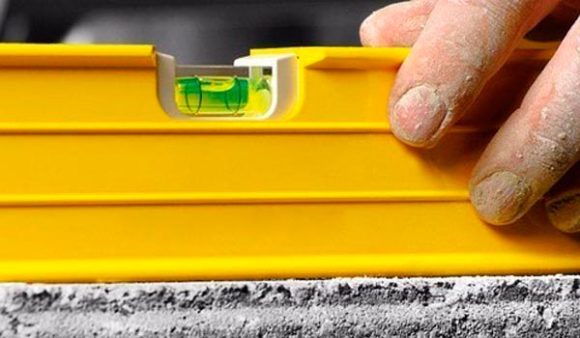
High-quality and accurate readings of the building level are in no way connected with its cost, and even more so with the brand. And remember! The construction level cannot give the correct testimonies to only one of its parties!
If you turn to the Internet, you can find a lot of obscure and, frankly, absolutely crazy ideas and ways in order to check the construction level for accuracy. Now we will analyze the simplest ways to test this equipment.
Horizontal direction
This method is suitable for testing a new bubble building level. Especially if it has just been bought at a store.
- Apply the building level to a flat surface that is horizontal. Remember where the air bubble is and its readings.
- Rotate it 180 degrees and attach it to this place again.
- Now you need to compare with previous readings.
- As a result, if the air bubble is in the same position, then the level is accurate.
Vertical direction
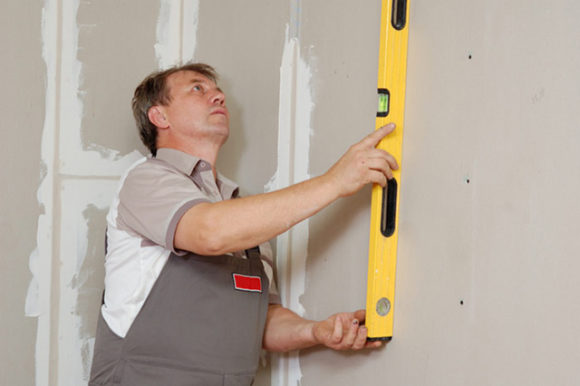
In the vertical direction, the accuracy check process is the same as in the horizontal direction, but only in the other direction.
How to calibrate a bubble level
There are cases when the construction level ceases to accurately show data. Many get rid of inaccurate equipment, but there is a way to set it up again. This process is called “calibration”. There is nothing complicated in it, the main thing is to follow all the recommendations step by step.
- Choose a surface that is flat. Ideal if it will be located at eye level.
The setting is best done in the corner of the room on the left.
- Step away from the corner of 4-6 centimeters, screw in the self-tapping screw. It should be visible at a remote distance.
- Place the spirit level on one side of the self-tapping screw and press it firmly against the wall.
- Next, set the construction level and draw a line.
- After the spirit level is leaned against the other side and the procedure is repeated.
- If the lines coincide completely, no further adjustment is required. The level is working properly.
- In case of mismatch, the process is repeated again. The building level is adjusted horizontally and vertically equally.
How to check the evenness of laying tiles and other surfaces
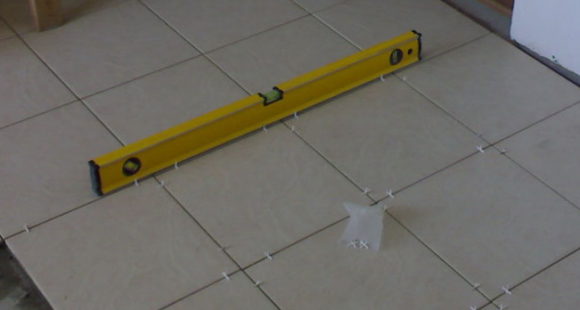
Finishing and construction work reached its finale. The walls are lined and papered; in the bathroom there is ceramic tile, and on the floor there is laminate, linoleum and so on. And did the builders carry out repairs in your house in a quality manner? Are the walls, floor, ceiling even? This is easy to verify with a building level ...
- Apply it to the surface on which the tile is laid and check by eye. In the case of high-quality laying, the air bubble will be in the center of the borders.
- Attach a building level to a wall or floor. With it, you can verify the evenness of the walls. Slight discrepancies are allowed, approximately 0.2 centimeters.
During construction and repair, the construction level should be used. This tool will save time, money. If the repair is carried out in your home by a construction team, then when accepting the work performed, you should also refer to the level. If you find uneven walls, floors, ceilings, then you can express your complaints on time and demand a redo of repairs due to the construction team.

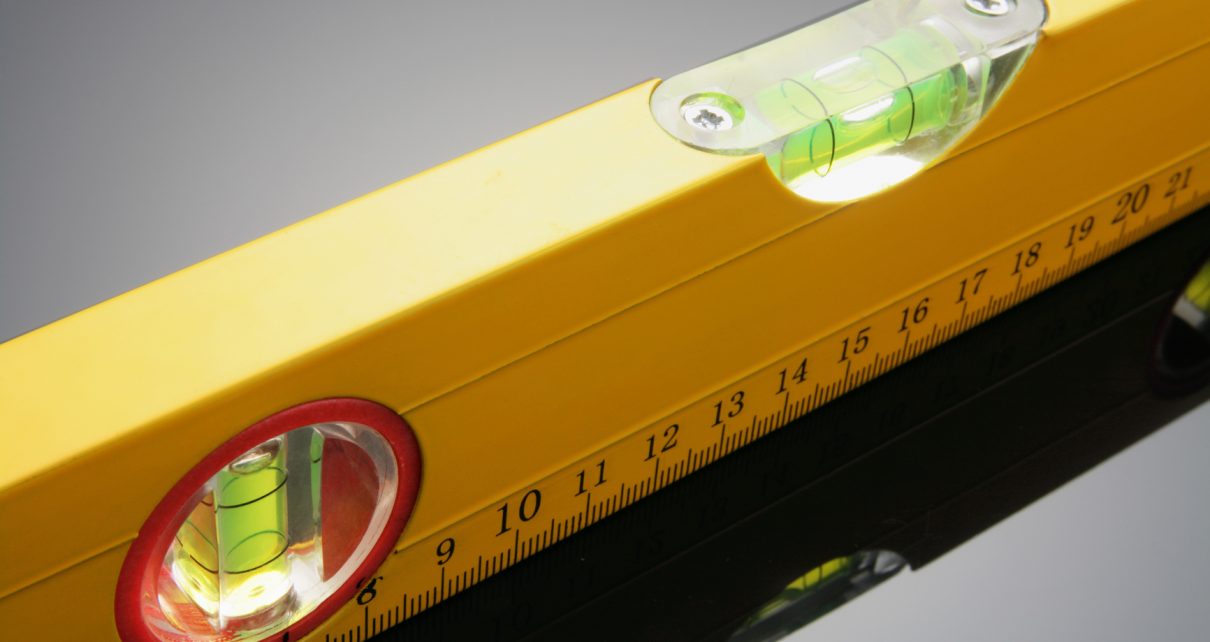



Alas, no comments yet. Be the first!